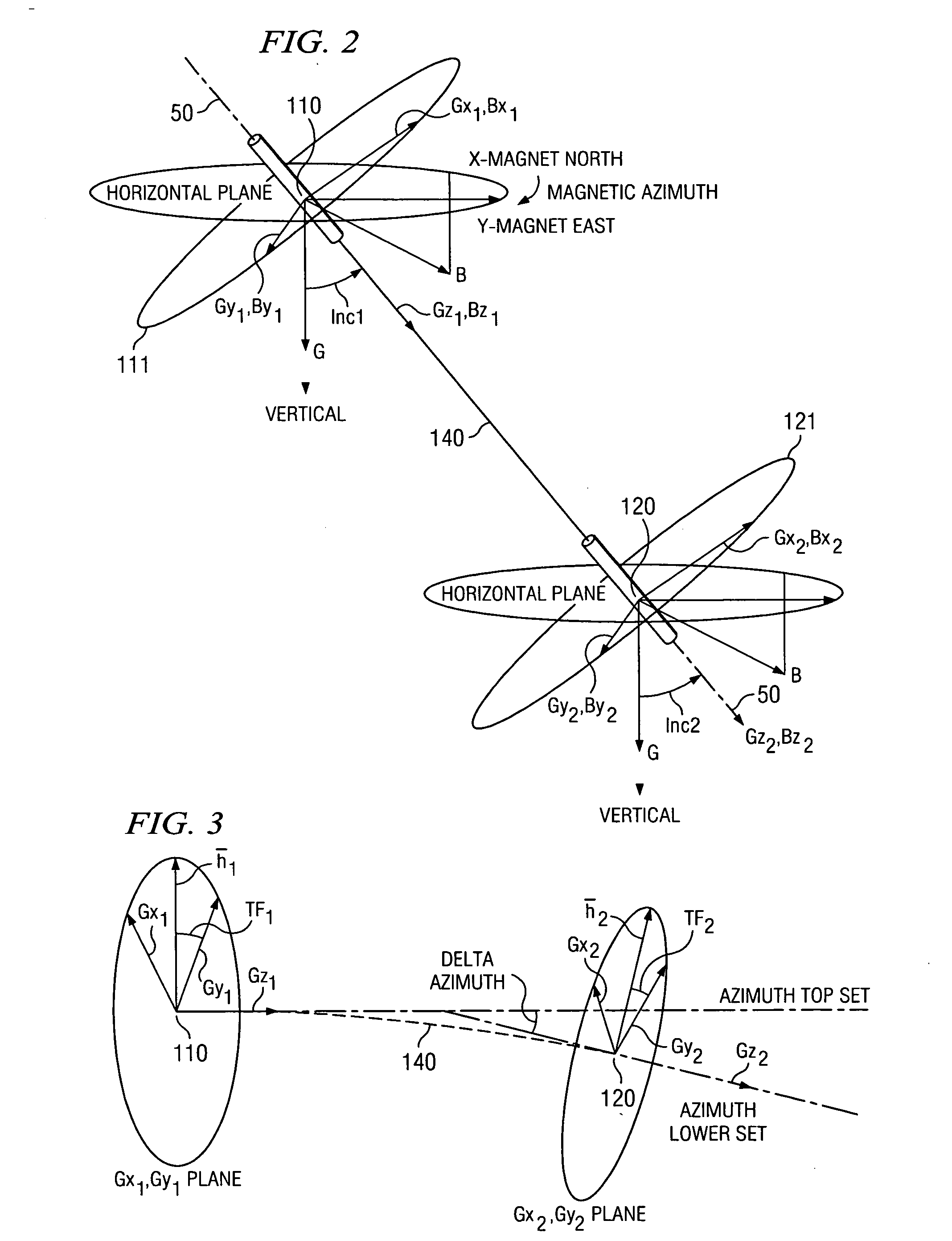Determining a borehole azimuth from tool face measurements
a technology of azimuth determination and tool face, which is applied in the field of gravity measurement sensors, can solve the problems of inability to reliably obtain magnetometer readings in proximity to the bottom hole assembly, inability to accurately determine the azimuth value of the magnetometer, and inability to meet the requirements of communication bandwidth, so as to minimize operator oversight and calibration requirements, improve accuracy and reliability of azimuth determination, and reduce communication bandwidth requirements
- Summary
- Abstract
- Description
- Claims
- Application Information
AI Technical Summary
Benefits of technology
Problems solved by technology
Method used
Image
Examples
Embodiment Construction
[0016] Referring now to FIG. 1, one exemplary embodiment of a downhole tool 100 according to the present invention is illustrated. In FIG. 1, downhole tool 100 is illustrated as a measurement while drilling (MWD) tool including upper 110 and lower 120 sensor sets coupled to a BHA including, for example, a steering tool 130 and a drill bit assembly 150. FIG. 1 illustrates that upper 110 and lower 120 sensor sets are typically disposed at a known longitudinal spacing ‘d’ in the downhole tool 100. The spacing ‘d’ may be, for example, in a range of from about 2 to about 30 meters (i.e., from about 6 to about 100 feet) or more, but the invention is not limited in this regard. Moreover, it will be understood that this invention is not limited to a known or fixed separation between the upper and lower sensor sets 110 and 120. Each sensor set (110 and 120) includes at least two mutually perpendicular gravity sensors, with at least one gravity sensor in each set having a known orientation wi...
PUM
 Login to View More
Login to View More Abstract
Description
Claims
Application Information
 Login to View More
Login to View More - R&D
- Intellectual Property
- Life Sciences
- Materials
- Tech Scout
- Unparalleled Data Quality
- Higher Quality Content
- 60% Fewer Hallucinations
Browse by: Latest US Patents, China's latest patents, Technical Efficacy Thesaurus, Application Domain, Technology Topic, Popular Technical Reports.
© 2025 PatSnap. All rights reserved.Legal|Privacy policy|Modern Slavery Act Transparency Statement|Sitemap|About US| Contact US: help@patsnap.com



